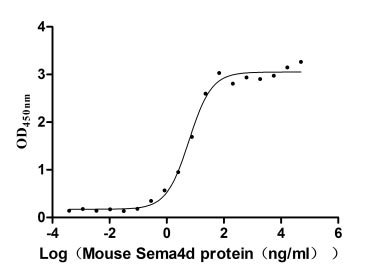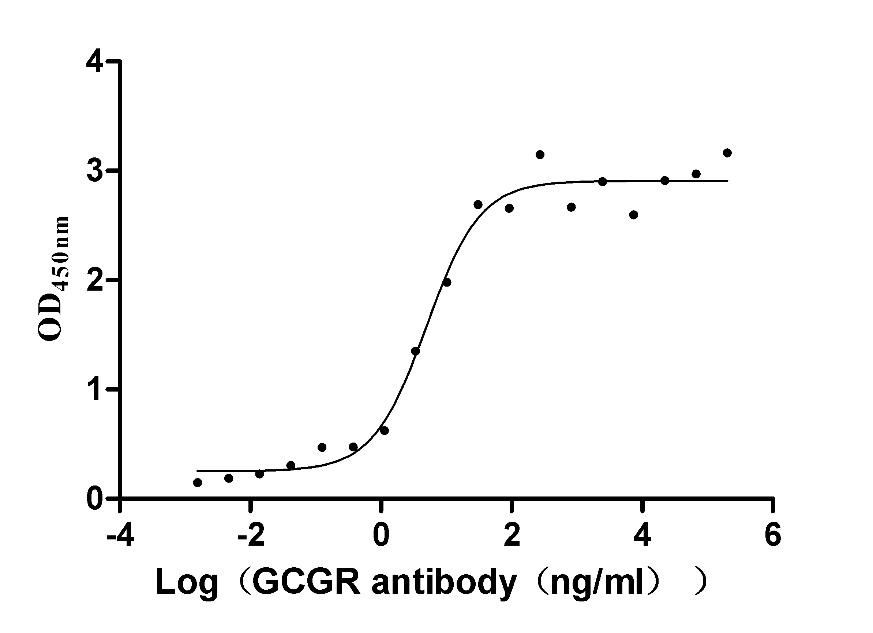Recombinant Botryotinia fuckeliana Presilphiperfolan-8-beta-ol synthase (BOT2)
-
中文名称:Recombinant Botryotinia fuckeliana Presilphiperfolan-8-beta-ol synthase(BOT2),Yeast
-
货号:CSB-YP751048BVC
-
规格:
-
来源:Yeast
-
其他:
-
中文名称:Recombinant Botryotinia fuckeliana Presilphiperfolan-8-beta-ol synthase(BOT2),Yeast
-
货号:CSB-EP751048BVC
-
规格:
-
来源:E.coli
-
其他:
-
中文名称:Recombinant Botryotinia fuckeliana Presilphiperfolan-8-beta-ol synthase(BOT2),Yeast
-
货号:CSB-EP751048BVC-B
-
规格:
-
来源:E.coli
-
共轭:Avi-tag Biotinylated
E. coli biotin ligase (BirA) is highly specific in covalently attaching biotin to the 15 amino acid AviTag peptide. This recombinant protein was biotinylated in vivo by AviTag-BirA technology, which method is BriA catalyzes amide linkage between the biotin and the specific lysine of the AviTag.
-
其他:
-
中文名称:Recombinant Botryotinia fuckeliana Presilphiperfolan-8-beta-ol synthase(BOT2),Yeast
-
货号:CSB-BP751048BVC
-
规格:
-
来源:Baculovirus
-
其他:
-
中文名称:Recombinant Botryotinia fuckeliana Presilphiperfolan-8-beta-ol synthase(BOT2),Yeast
-
货号:CSB-MP751048BVC
-
规格:
-
来源:Mammalian cell
-
其他:
产品详情
-
纯度:>85% (SDS-PAGE)
-
基因名:BOT2
-
Uniprot No.:
-
别名:BOT2; CND15Presilphiperfolan-8-beta-ol synthase; PSPS; EC 4.2.3.74; Botrydial synthesis protein 2; Calcineurin-dependent protein 15; Sesquiterpene cyclase BOT2; Sesquiterpene synthase BOT2
-
种属:Botryotinia fuckeliana (Noble rot fungus) (Botrytis cinerea)
-
蛋白长度:full length protein
-
表达区域:1-399
-
氨基酸序列MAIPALEPQL HDADTSSNNM SSNSTDSGYD TNSTTPLEKS EKPNTQELKQ QQLDPKRPPF VRVPDLFGSI MSTKPVVNPN YFAAKARGDR WIARVMNFNK AVAARNSKVD LCFLASMWAP DAPEDRLVMM LDWNHWVFLF DDQFDEGHLK EDPAAAAEEV KQTIAIMGGN APRYTAESNP IRYVFQQCWD RLKAVSSQEM QQRWIDQHKR YFDQLLVQVD QQVGGENFTR DVEAYMDLRR GTIGVYPAIS LSEYGAGVNV PQHVYDHPSL QECMKVSADL VTLVNDVLSY RKDLELGVDH NLMSLLMQRD NLSAQQAVDV IGDMVNECYR RWYLALAELP SYGEKIDYNV MKFVEICRAV AQGNLYWSFQ TGRYLGPEGH EVHETGIMYL PPAANLVVA
-
蛋白标签:Tag type will be determined during the manufacturing process.
The tag type will be determined during production process. If you have specified tag type, please tell us and we will develop the specified tag preferentially. -
产品提供形式:Lyophilized powder
Note: We will preferentially ship the format that we have in stock, however, if you have any special requirement for the format, please remark your requirement when placing the order, we will prepare according to your demand. -
复溶:We recommend that this vial be briefly centrifuged prior to opening to bring the contents to the bottom. Please reconstitute protein in deionized sterile water to a concentration of 0.1-1.0 mg/mL.We recommend to add 5-50% of glycerol (final concentration) and aliquot for long-term storage at -20℃/-80℃. Our default final concentration of glycerol is 50%. Customers could use it as reference.
-
储存条件:Store at -20°C/-80°C upon receipt, aliquoting is necessary for mutiple use. Avoid repeated freeze-thaw cycles.
-
保质期:The shelf life is related to many factors, storage state, buffer ingredients, storage temperature and the stability of the protein itself.
Generally, the shelf life of liquid form is 6 months at -20°C/-80°C. The shelf life of lyophilized form is 12 months at -20°C/-80°C. -
货期:Delivery time may differ from different purchasing way or location, please kindly consult your local distributors for specific delivery time.Note: All of our proteins are default shipped with normal blue ice packs, if you request to ship with dry ice, please communicate with us in advance and extra fees will be charged.
-
注意事项:Repeated freezing and thawing is not recommended. Store working aliquots at 4°C for up to one week.
-
Datasheet :Please contact us to get it.
靶点详情
-
功能:Presilphiperfolan-8-beta-ol synthase; part of the gene cluster that mediates the biosynthesis of botrydial. Botrydial is necessary for colonization of plant tissue by the T4 strain. It is a strain-dependent virulence factor since highly aggressive strains like SAS56 or B05 still retain substantial virulence when botrydial synthesis is impaired, since they produce also botcinic acid. The first step of botrydial biosynthesis is performed by the sesquiterpene synthase BOT2 which catalyzes the cyclization of farnesyl diphosphate (FPP) to presilphiperfolan-8-beta-ol (PSP). The cytochrome P450 monooxygenase BOT4 then catalyzes the hydroxylation at C-4 to give a probotryane intermediate. Acetylation of the hydroxyl at C-4 is carried out by the acetyltransferase BOT5, followed by the combined action of the P450 monooxygenases BOT3 and BOT1, to yield finally the glycol, via the regio- and stereospecific hydroxylations at C-10 and C-15 of the probotryane intermediates, respectively. The cleavage of the C10-C15 bond of probotryane skeleton is an intriguing and chemically important reaction, which could be mediated by some of the monooxygenases or by a combination of them. It is possible that either BOT3 or BOT1 would oxidize either the 10- or the 15-hydroxy group to the hydroperoxide derivative, which would then undergo heterolytic fragmentation to give the dialdehyde botrydial. Finally, the dehydrogenase BOT7 might be involved in the conversion of botrydial to dihydrobotrydial.
-
蛋白家族:Terpene synthase family
-
数据库链接:
KEGG: ag:AAQ16575
Most popular with customers
-
Recombinant Human Lymphotoxin-alpha (LTA) (Active)
Express system: Mammalian cell
Species: Homo sapiens (Human)
-
Recombinant Mouse Semaphorin-4D (Sema4d), partial (Active)
Express system: Mammalian cell
Species: Mus musculus (Mouse)
-
Recombinant Human Glucagon receptor (GCGR), partial (Active)
Express system: Mammalian cell
Species: Homo sapiens (Human)
-
Recombinant Human Claudin-18.2 (CLDN18.2)-VLPs (Active)
Express system: Mammalian cell
Species: Homo sapiens (Human)
-
Recombinant Human IL12B&IL12A Heterodimer Protein (Active)
Express system: Mammalian cell
Species: Homo sapiens (Human)
-
Recombinant Human Claudin-3 (CLDN3)-VLPs (Active)
Express system: Mammalian cell
Species: Homo sapiens (Human)
-
Recombinant Mouse Cell adhesion molecule 1 (Cadm1), partial (Active)
Express system: Mammalian cell
Species: Mus musculus (Mouse)
-
Recombinant Human C-type lectin domain family 4 member C (CLEC4C), partial (Active)
Express system: Mammalian cell
Species: Homo sapiens (Human)





-AC1.jpg)














